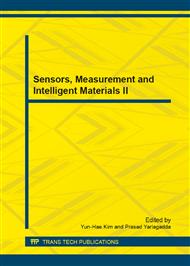p.1670
p.1674
p.1679
p.1685
p.1689
p.1693
p.1697
p.1703
p.1707
Effects of Longitudinal RF Electric Field on the Characteristics of Dielectric Single-Surface Multipactor Discharge
Abstract:
A 2-D model of electron movement on the dielectric window surface is established, and the combined effects of additional RF field and dielectric surface electrostatic field are considered. According to the simulation of movement trajectories of electrons under different longitudinal RF field, it indicates that electrons are pulled back dielectric surface and transit time is shortened when longitudinal RF field and surface electrostatic field are in the same direction. While electrons are pushed away from the surface when the fields are in the reverse direction.We also analyzed the effect of longitudinal RF field on the multipactor discharge by calculating susceptibility diagrams.
Info:
Periodical:
Pages:
1689-1692
Citation:
Online since:
December 2013
Authors:
Price:
Сopyright:
© 2014 Trans Tech Publications Ltd. All Rights Reserved
Share:
Citation:


